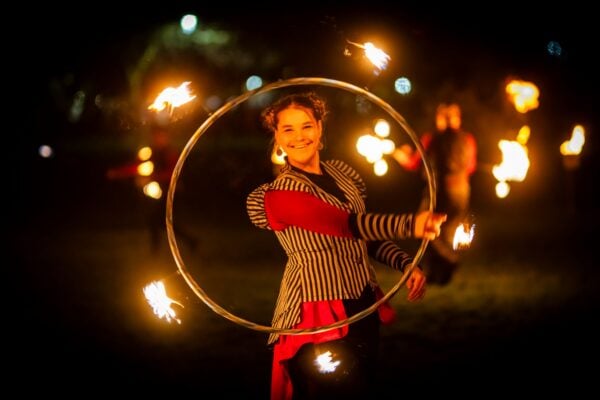From bars with waterside views to boat trips along the coast, discover more ways you can enjoy Edinburgh’s Forth Bridges.
Flowing from the Trossachs, through Stirling and down the Forth Valley before widening out at Kincardine, onto Edinburgh, and out into the North Sea, the Forth River is spanned by five bridges.
Three of these bridges dominate Edinburgh’s skyline and as well as providing essential transport links between Edinburgh and the Lothians on the south coast and Fife on the north coast, have a few stories of their own.
Tip 1: Bring your camera to capture the stunning views of the Forth Bridges area.
Tip 2: Take a walk along South Queensferry’s high street and discover a variety of local shops, cafes and restaurants.
Tip 3: Take a boat trip to Inchcolm Island and explore the 12th century abbey, two beautiful beaches and learn more about the island’s use during World War I and II.
The Forth Bridge
Its UNESCO World Heritage status.

By the 17th century the town of South Queensferry, a short distance from Edinburgh, had become a flourishing seaport, trading in coal, wool and hides and importing wine, silk, linen and timber from Europe and Scandinavia. In 1627, as the town continued to grow in prosperity, South Queensferry was made a Royal Burgh and by the 18th century it was thought to be the busiest ferry in Scotland.
However, it was the spreading of the railway network in the middle years of the century, that underlined the need for a bridge. Considered to be one of the most impressive feats in Victorian engineering, The Forth Bridge was formally opened by The Prince of Wales on 04 March 1890 and was inscribed as a UNESCO World Heritage Site in 2015.
The Forth Bridge facts and figures:
*53,000 tonnes of steel and 6.5 million rivets were used to construct the bridge.
* At the height of its construction, more than 4,000 men were employed.
* 200 trains use the bridge every day, carrying 3 million passengers each year.
The Forth Road Bridge
On its opening in 1964, it was the first bridge of its kind in the UK, the longest outside the USA, and the fourth longest in the world.
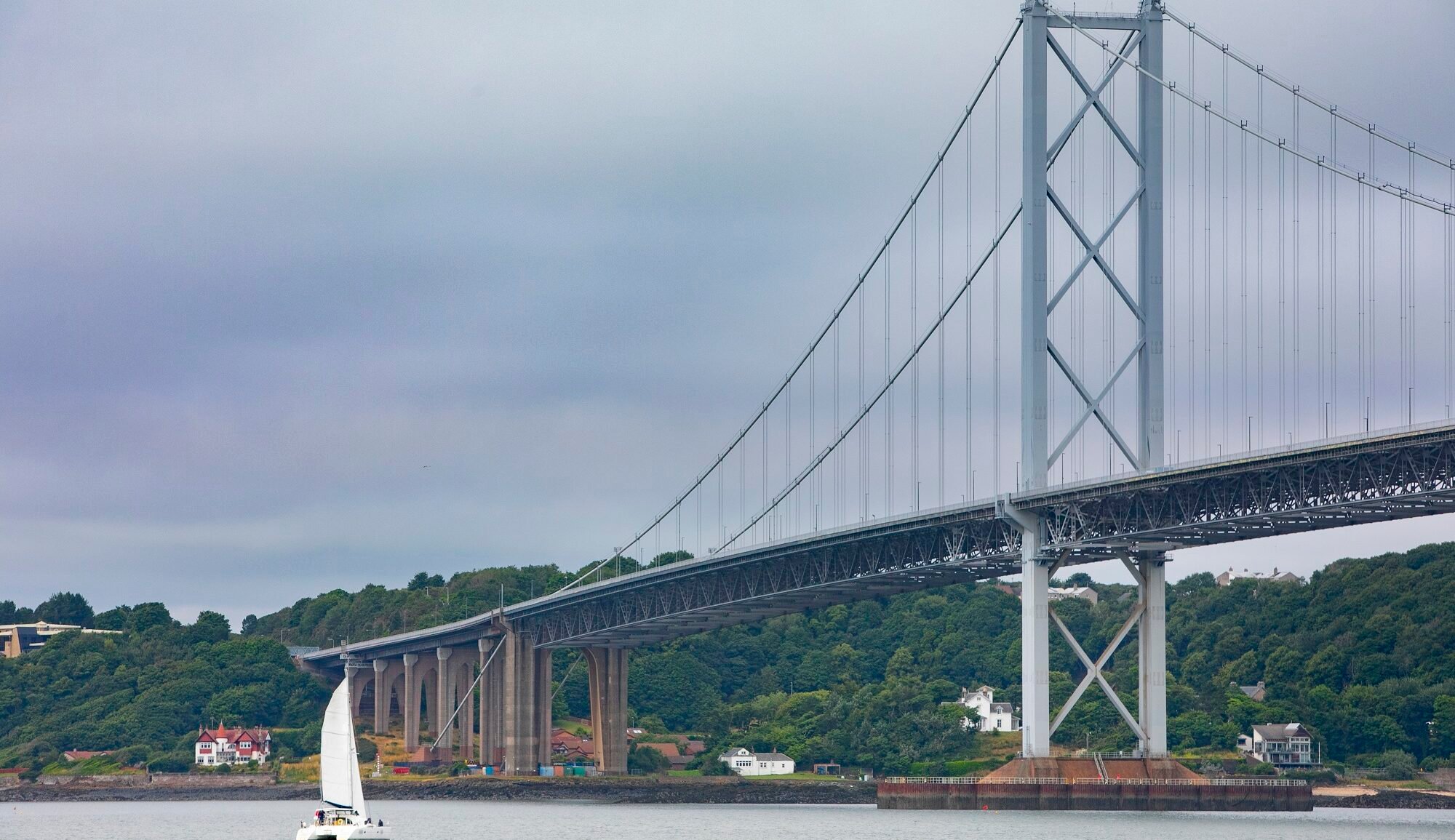
By the mid 1920s and the steady advance of the motor age, it became apparent a road crossing over the Firth of Forth was required. Construction of The Forth Road Bridge began in 1958.
1961 saw the completion of the main cable anchorages, bored into the rock on both shores and the two main towers. By August 1962, 30,000 miles of high-tensile steel wires had been spun together to make up the main cables.
The final box girders were swung into place at the end of 1963 and covered in the Union Flag and Lion Rampant to mark the occasion, before it was opened by Queen Elizabeth II on 04 September 1964.
The Forth Road Bridge facts and figures:
* ‘Guid Passage’ was the fitting motto given at its opening.
* Together with the approach viaducts, it is just over 2.5km in length.
* The Forth Road Bridge was designated a Category A listed structure in March 2001.
The Queensferry Crossing
Exploring the Kingdom of Fife on a day trip from Edinburgh, The Queensferry Crossing is the longest three-tower, cable-stayed bridge in the world
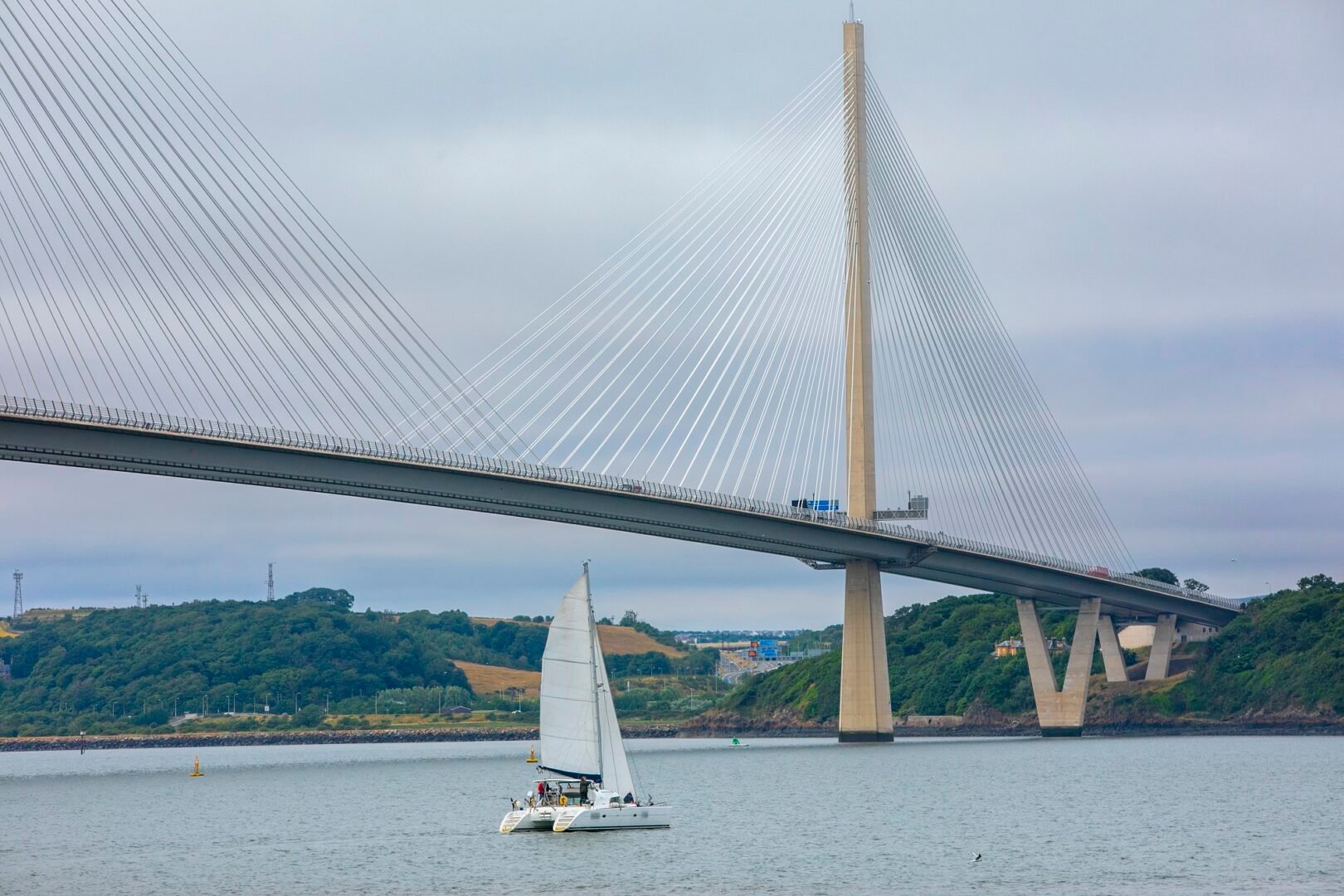
Despite significant maintenance, by the early 2000s the Forth Road Bridge was beginning to show signs of significant deterioration. Given the large number of vehicles that used the bridge daily, it was no longer deemed practical as the long-term main crossing for the Firth. It was decided that the existing bridge would solely be used for buses, pedestrians and cyclists, and a new bridge built for all other traffic.
Carrying the M90 motorway across the Firth of Forth, The Queensferry Crossing was officially opened by Queen Elizabeth II on 04 September 2017, 53 years to the day after she opened the adjacent Forth Road Bridge.
The Queensferry Crossing facts and figures:
* It was the biggest infrastructure project in Scotland for a generation.
* The bridge spans 1.7 miles (2.7km) making it the longest three-tower, cable-stayed bridge in the world.
* Over 23,000 miles of cabling were used, which is almost the same distance as the circumference of the earth at the equator (24,874 miles).
For more information of all of the Bridges, visit The Forth Bridges website
Top tips to enjoy the Bridges
Today, not only do you have the choice of travelling on the bridges by car, bus or train, but you can also discover the majesty of these famous structures from other viewpoints:
1. Walk or cycle across the Forth Road Bridge
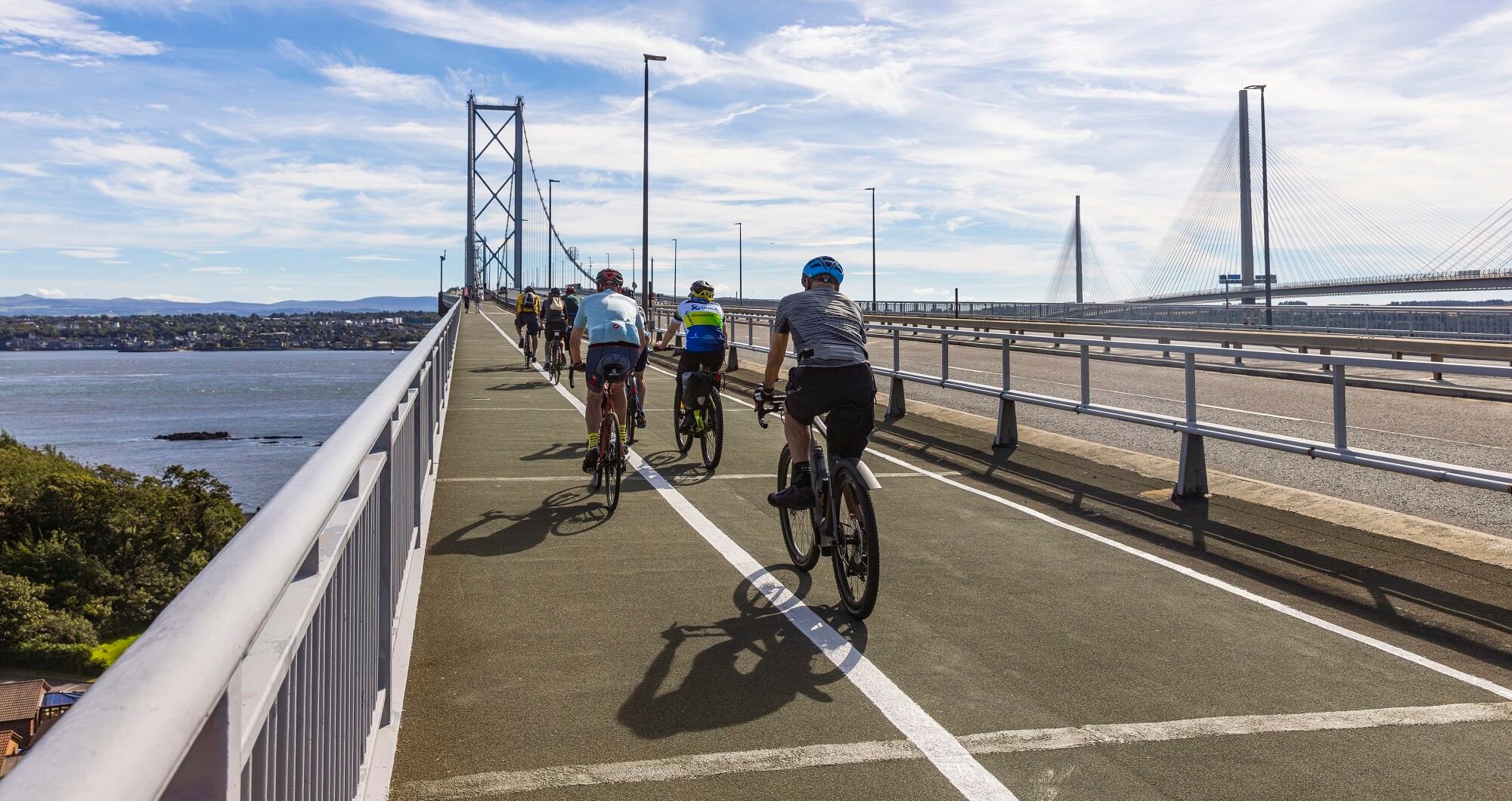
With the opening of the Queensferry Crossing as a motorway, the Forth Road Bridge now has a new chapter to its story – it is now a public pathway, opening up the route for walking and cycling across the Forth. With stunning views across to Edinburgh and the Lothians on the south coast and Fife on the north coast, this is a real Instagram picture-perfect location.
Alternatively, if you fancy a longer walk or cycle, why not try the five-mile long Forth Bridges Trail. This trail gives amazing views of all three bridges and takes you through the vibrant communities of North and South Queensferry.
2. Book a boat trip

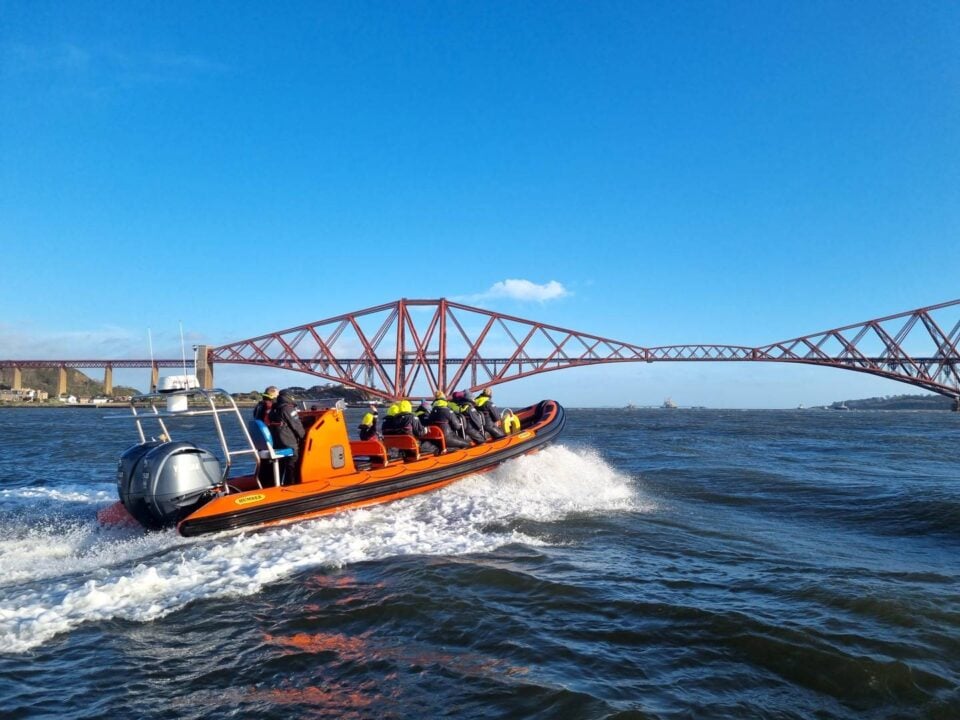
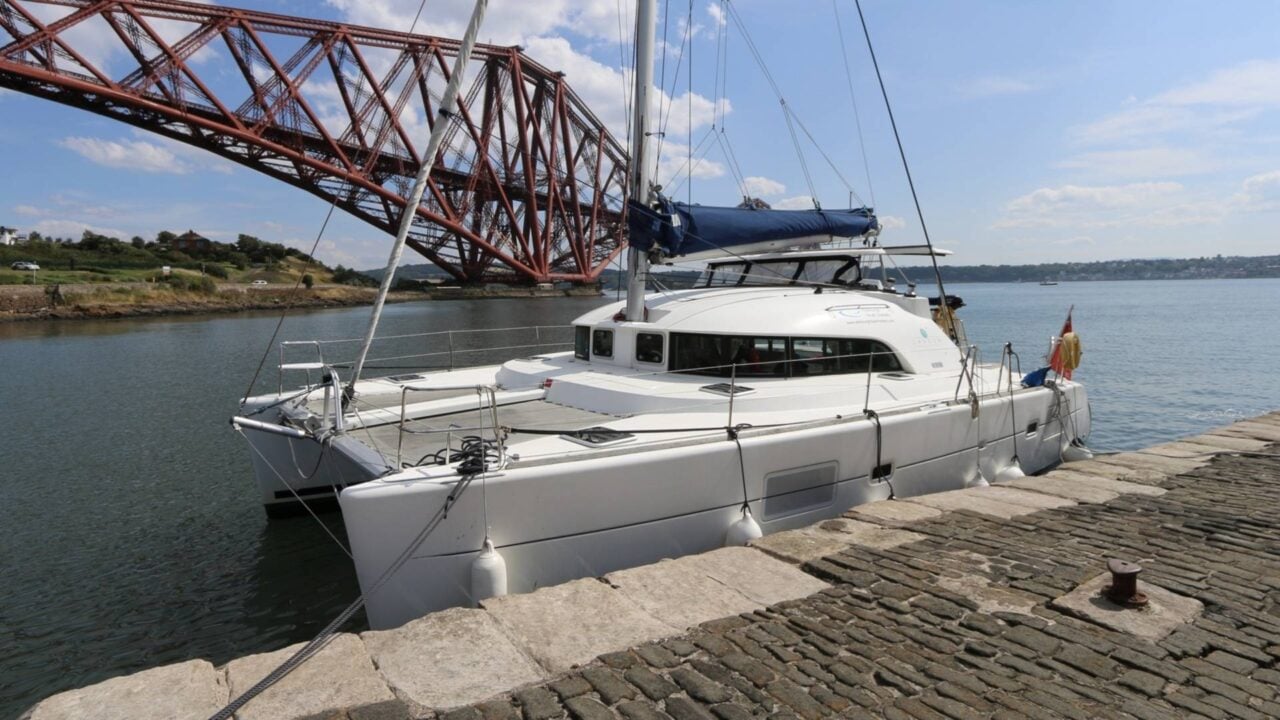
If you fancy seeing the bridges from a different perspective, why not book a boat trip. Available from South Queensferry, you’ll travel up the Forth and under the bridges, explore the wildlife and see Inchcolm Island which is home to both a 12th century abbey and the fascinating remnants of Second World War defences. Providers include Maid of the Forth and Edinburgh Boat Charters.
If you really want to feel the wind in your hair, book an exhilarating powerboat trip with Edinburgh Marine Academy.
3. Visit Queensferry Museum
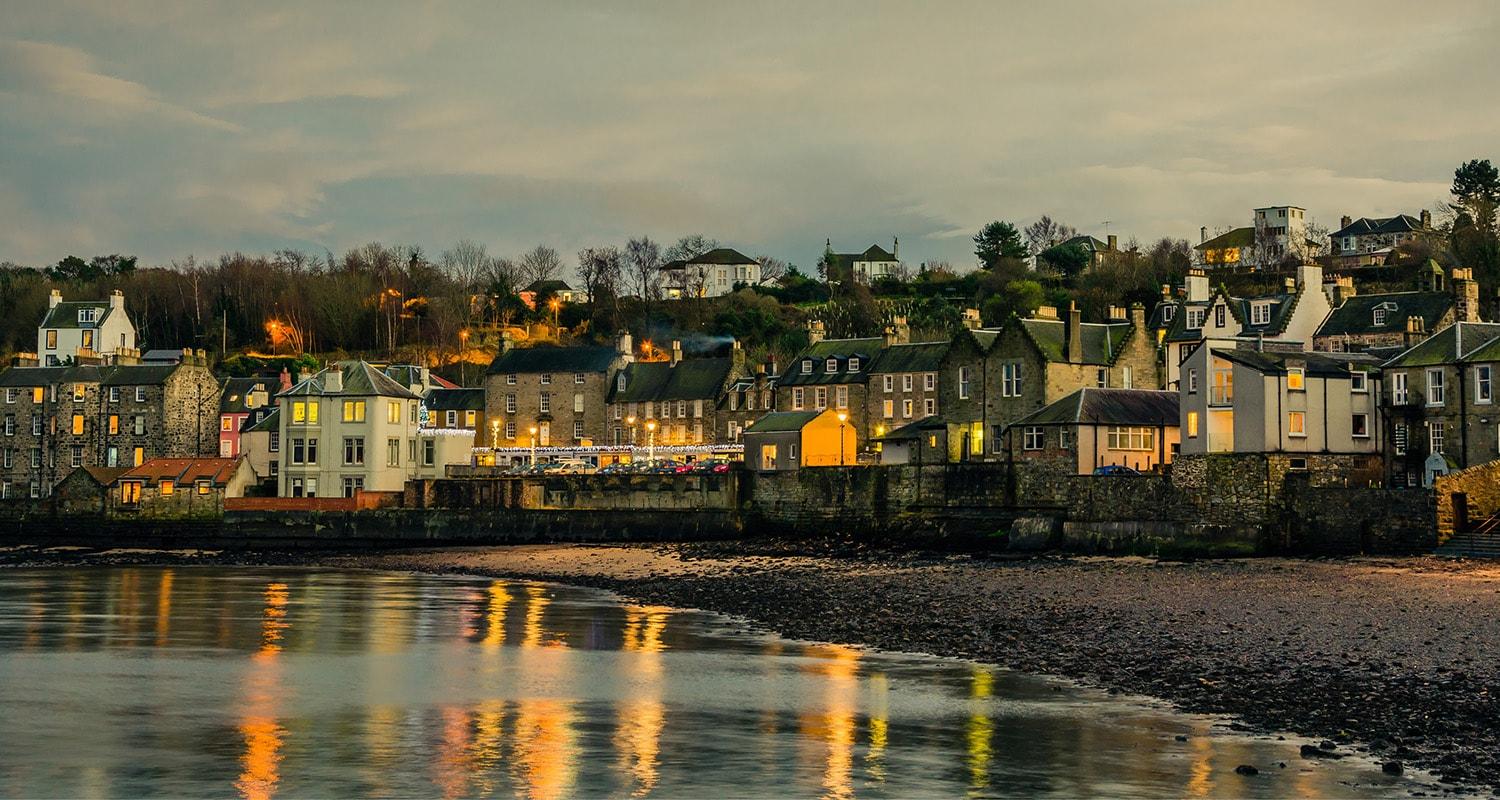
Queensferry Museum showcases the past and traditions of historic Queensferry and neighbouring Dalmeny. As well as permanent displays, the museum hosts a room dedicated to temporary exhibitions, curated by community groups.
With stunning views out onto the Firth of Forth, whether your interest is social history, folk traditions or civic engineering, there’s something here at this small but enjoyable museum.
Free to visit, with donations welcome.
(Queensferry Museum is currently closed. Keep an eye on their website for opening updates).
4. Wine and dine with a view
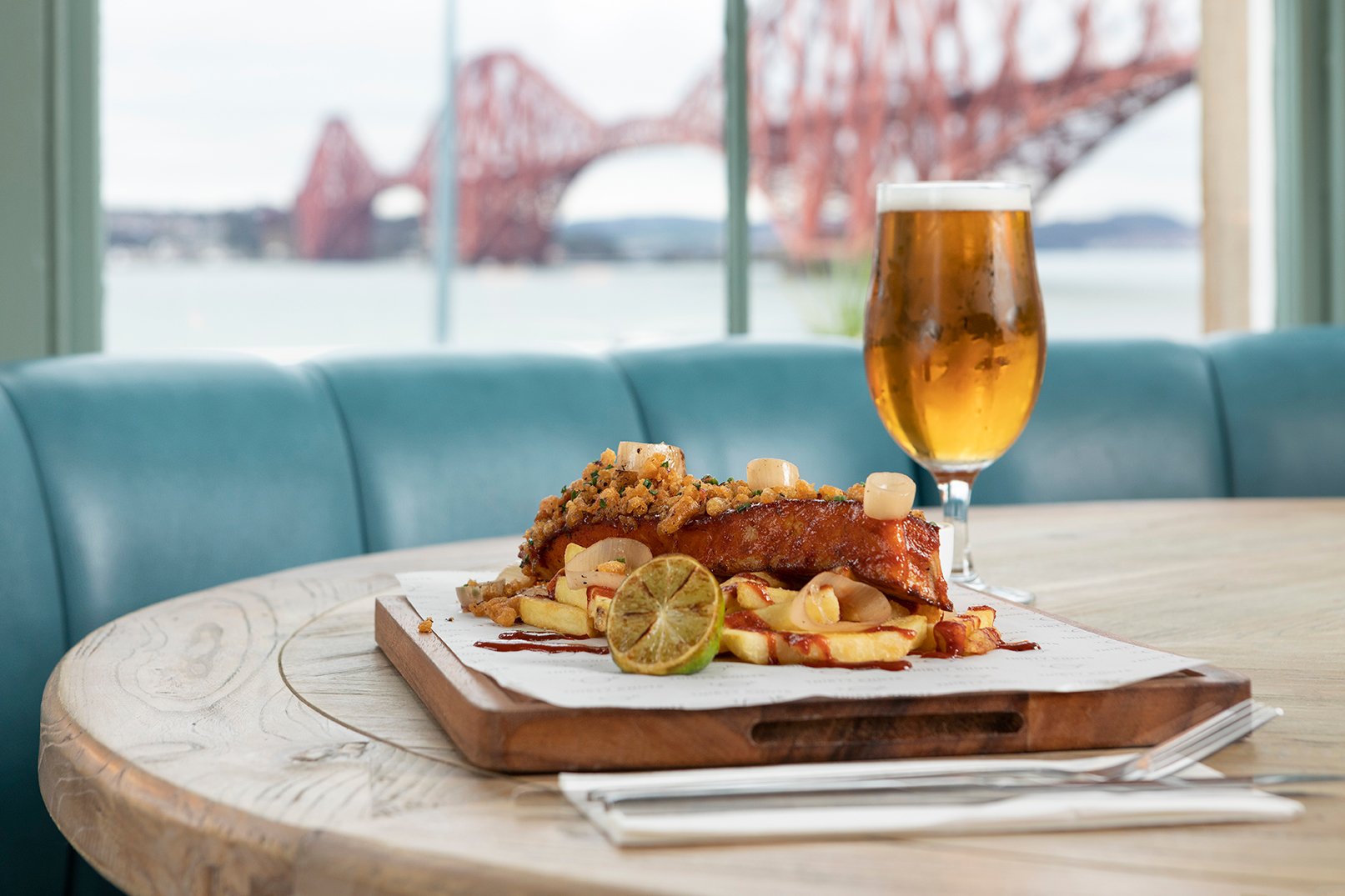
After exploring, why not treat yourself (and your feet) to a relaxing meal at one of the many delightful restaurants in South Queensferry. With several offering stunning panoramic views across the Forth, you’ll be rewarded with both a treat a treat for the eyes and senses.
Situated within the stylish boutique hotel Orocco Pier, a mouth-watering selection of the finest seafood and prime Scotch steaks is on offer at Samphire Seafood Bar & Grill. Or why not tuck into sumptuous pan-fried scallops, wild Scottish halibut, local lobster, crab and rock oysters at The Boat House. If an extensive wine list, classic cocktails and plenty of favourite local artisan gins and craft beers is more to your liking, alongside a menu featuring everything from traditional fish & chips, to dry aged steaks and freshly landed seafood, be sure to pay a visit to Scotts Bar and Restaurant. Breakfast, lunch and dinner is available at Thirty Knots. If the weather is kind, their outdoor terrace is a lovely place to dine and take in the river-side views.
Discover more about South Queensferry
Keen to learn more about South Queensferry and plan your next trip to this small coastal community, just a few minutes’ train ride from Edinburgh Waverley?

